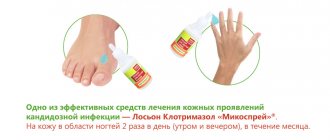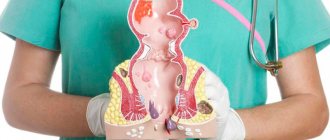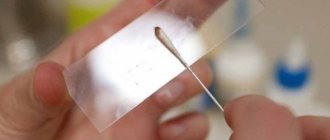Neonatology emerged from pediatrics - a teaching with a multi-thousand-year history. The Ebers Papyrus, dating back to 1552 BC and considered one of the oldest medical manuscripts, described the procedure for breastfeeding and treating helminths in infants. Since ancient times, midwives have been caring for newborns.
Two of them are mentioned in the Bible: “The king of Egypt commanded the midwives of the Hebrew women, one of whom was named Shifra, and the other Puah, and said: when you midwife the Hebrew women, then watch the birth: if there is a son, then kill him; daughter, then let her live.” But the God-fearing midwives disobeyed the king and left all the children alive, for which “God did good to the midwives, and the people multiplied and became very strong” (Exodus 1:15-20).
Ebers Papyrus / ©Wikipedia
The beloved ancient Greek statesman Pericles, Aspasia, was a skilled midwife. Her works on pregnancy hygiene, assistance with miscarriages and care for newborns have survived to this day. Hippocrates, called the father of medicine, wrote about the treatment of childhood diseases such as asthma and cephalohematoma. The ancient Greek physician Soranus of Ephesus and the ancient Roman physician Galen made their contributions to pediatrics.
The first taught to determine the quality of breast milk by the condition of the nails, and the second mentioned cases of otorrhea (ear disease - NS) and pneumonia. The medieval Persian scientist, philosopher and physician Ibn Sina wrote about meningitis, convulsions and tetanus.
However, the methods of treating childhood diseases outlined in such treatises, if they helped, were only partially effective. In Europe in the mid-18th century, parents lost an average of three to four children, most often in the first year of life. The response of pre-industrial society to high infant mortality was the construction of specialized medical institutions.
Childbirth in medieval Europe / ©pinterest.co.uk
The first of its kind was the pediatric hospital Hôpital des Enfants Malades, which appeared in Paris in 1802. The second is a children's hospital in St. Petersburg, which was opened in 1834 under the patronage of Emperor Nicholas I. It was designed for 60 beds, and later another room with 40 beds was allocated for the infectious diseases department. Other countries followed the example of France and Russia, including Germany, England and Poland. In 1855, a children's hospital was established in the United States.
The problem of child mortality, however, has not lost its urgency. Thus, in the Russian pre-revolutionary arithmetic problem book for primary grades one can find the following example: “The child was born on May 12 at 9 o’clock in the morning, and died on June 11 of the same year at 1 o’clock in the afternoon. How long did the child live?”
Birth of a profession
A direct successor of pediatrics, neonatology studies infants, their growth and development, their inherent diseases and pathologies. The term itself was proposed by the American pediatrician Alexander Shaffer in 1960. Literally, neonatology is translated as “doctor for newborns” (neonate – “newborn” + -оlogy). Such doctors work in maternity hospitals, perinatal centers, and pathology departments for young children.
The large family. Beginning of the 20th century / ©commons.com.ua
One can still hear the question: how, exactly, does a neonatologist differ from a pediatrician? This lack of awareness is not surprising - when today's 35-year-olds were born, this profession did not officially exist everywhere. For example, in the USSR it was introduced only in November 1987. The roots of both specialties are the same, but if a pediatrician deals with the health of children until their 18th birthday, then a neonatologist does this in the first 28 days. This is how long the neonatal period lasts, and it is also considered the most dangerous in a child’s life. And all because during this time the newborn’s body is most vulnerable to external influences.
It is significant that since the late 1980s, the infant mortality rate began to decline steadily - from 48.5 thousand children in 1987 to 8.2 thousand in 2018. Over the eight months of this year, according to Health Minister Veronika Skvortsova, this figure has reached its minimum level.
Experts note that if in the 1980-1990s the reduction in infant mortality occurred due to the treatment of respiratory diseases, infectious and parasitic diseases, today it is becoming increasingly important to reduce mortality from congenital malformations and certain conditions that arise during the perinatal period, then available from 22 full weeks.
Spectrum of care[edit]
A 30-minute-old baby in Iran.
The nurse provides necessary care after childbirth. Rather than focusing on a specific organ system, neonatologists focus on caring for newborns who require intensive care unit (ICU) admission. They can also act as general pediatricians, ensuring that newborns are well examined and cared for in the hospital where they are staying. Some neonatologists, especially in academic institutions, may follow infants for months or even years after hospital discharge to better assess the long-term effects of early health problems. Some neonatologists conduct clinical and basic science research to better understand this special group of patients.
The infant undergoes many adaptations to ectopic life, and its physiological systems, such as the immune system, are far from fully developed. Conditions of concern in the neonatal period include:
- Anemia of prematurity
- Apnea of prematurity
- Atrial septal defect
- Atrioventricular septal defect
- Benign neonatal hemangiomatosis
- Brachial plexus injury
- Bronchopulmonary dysplasia
- Cerebral paralysis
- CHARGING syndrome
- Cleft palate
- Coarctation of the aorta
- Congenital adrenal hyperplasia
- Congenital diaphragmatic hernia
- Congenital heart defect
- Diffuse neonatal hemangiomatosis
- DiGeorge syndrome
- Encephalocele
- Gastroschisis
- Hemolytic disease of the newborn
- Hirschsprung's disease
- Hypoplastic left heart syndrome
- Hypoxic ischemic encephalopathy
- Inborn errors of metabolism
- Intraventricular hemorrhage
- Lissencephaly
- Meconium aspiration syndrome
- Necrotizing enterocolitis
- Neonatal abstinence syndrome
- Neonatal cancer
- Jaundice of newborns
- Neonatal respiratory distress syndrome
- Neonatal lupus erythematosus
- Neonatal conjunctivitis
- Pneumonia of newborns
- Neonatal tetanus
- Neonatal sepsis
- Intestinal obstruction of the newborn
- Neonatal stroke
- Diabetes mellitus of newborns
- Neonatal alloimmune thrombocytopenia
- Neonatal herpes simplex
- Neonatal hemochromatosis
- Neonatal meningitis
- Neonatal hepatitis
- Neonatal hypoglycemia
- Neonatal cholestasis
- Neonatal seizure
- Omphalocele
- Patent ductus arteriosus
- Perinatal asphyxia
- Periventricular leukomalacia
- Persistent pulmonary hypertension of the newborn
- Persistent truncus arteriosus
- Pulmonary hypoplasia
- Retinopathy of prematurity
- Spina bifida
- Spinal muscular atrophy
- Supraventricular tachycardia
- Tetralogy of Fallot
- Complete (or partial) anomalous connection of the pulmonary veins
- Tracheoesophageal fistula
- Transient tachypnea of the newborn
- Transposition of the great vessels
- Tricuspid valve atresia
- Trisomy 13/18/21
- Association VACTERL/VATER
- Ventricular septal defect
- Vertically transmitted infections
Treat in Russian
One of the largest domestic manufacturers of advanced neonatal equipment is Shvabe. Today the holding, part of the Rostec State Corporation, occupies 30 percent of the Russian market for products for children's healthcare institutions.
“The creation and launch of new neonatal equipment directly affects the improvement of the demographic situation in the country. Our products are used in intensive care units and intensive care units and allow us to care for newborns in the most difficult cases, including infants with extremely low body weight - from 500 grams.
Neonatologist / ©Press service of Rostec
At the same time, Shvabe neonatal equipment has proven itself not only in the Russian market - it is exported to 80 countries. Thus, incubators produced by the holding have been saving children's lives all over the world for more than 20 years. The secret of success is simple: at a lower price, our equipment is in many ways superior in functionality to foreign analogues,” notes Rostec Executive Director Oleg Yevtushenko.
One of the latest innovations is the BONNY mobile incubator, which has already received diplomas and awards at foreign exhibitions. It can be used both in stationary conditions and for transportation over long distances, including in hard-to-reach regions. Previously, such devices were not produced in Russia.
Mobile incubator BONNY / ©Press service of Rostec
A very common diagnosis is physiological jaundice of newborns - yellow discoloration of the skin and mucous membranes caused by an increase in the amount of bile pigment bilirubin in the blood. The OFN-02 phototherapeutic emitter effectively copes with this problem - thanks to it, there is no need to use additional medications. For babies born prematurely, it is very important to maintain conditions as close as possible to the conditions in the womb. For these purposes, the “Radiant Heat – BONO” heater is used.
Neonatology
The birth of a new person is undoubtedly the most important event in the life of every woman. In the first days of life, the health and full development of the baby is influenced by breastfeeding, which is an important period in his communication with his mother. Breast milk from the mother is undoubtedly the most complete nutrition necessary for a child to ensure normal and healthy development, starting from the first days of life.
In order to ensure adequate breastfeeding for your baby, you must adhere to certain rules, including proper nutrition for the mother herself. Complete, and most importantly high-quality nutrition of a breastfeeding woman creates conditions for the release of milk enriched with vitamins and nutrients in the required quantities.
First of all, high-calorie foods with low nutritional value must be excluded from the daily diet of a nursing woman. We are talking about refined foods and various types of sweets, except dried fruits and honey. The daily diet of a woman breastfeeding a newborn should consist of products that can be combined into the following groups:
- Cereal-containing products: black bread made from wholemeal flour with the addition of bran, porridge, category A pasta (hard grades) and rice.
- Vegetable products.
- Fruits and berries.
- Foods enriched with proteins: fish, meat (preferably lean, cooked without the use of oils), poultry and eggs.
- Dairy and fermented milk products.
- Vegetable oils should be used as a dressing for vegetable salads.
In addition, since it is impossible to obtain the required amount of essential minerals and vitamins solely from food, in addition to a woman’s basic nutrition, it is necessary to include in the diet multivitamin complexes designed specifically for nursing women. In any case, when choosing a particular diet and supplements to it, every mother needs to consult a doctor.
After the baby is born, milk does not immediately enter the woman’s breast. For the first five days, mature milk replaces colostrum, which contains much more antibodies, protein and nutrients than mature milk. Therefore, in order for the baby not to starve, it must be applied to the mother’s breast until mature milk appears. This will provide adequate nutrition and help a smooth transition to new physiological conditions.
Also, the time of weaning the baby to the mother’s breast plays a huge role in his further full development. The sooner the newborn is attached to the mother's breast, the faster postpartum stress will go away. The conditions in which it is carried out are of great importance for proper feeding. Mother and child should not experience discomfort from the conditions of their stay in a medical facility, while staying together for as long as possible.
Breastfeeding should be carried out at every request of the child and at any suitable moment, both during the day and at night. At the same time, it is also not recommended to stop feeding the child by force; the baby must regulate the duration of the feeding process himself. Such actions will, firstly, provide the child with food in the required quantities, and secondly, create comfortable psycho-emotional conditions for him. When breastfeeding, the use of pacifiers, nipples and complementary feeding with foreign liquids is unacceptable. If the baby is thirsty, instead of supplementing the baby, you need to put him to the breast more often.
When breastfeeding, there is undoubtedly a need for proper breast care for a nursing woman. You should not wash your breasts after each feeding; it is enough to do this once a day so as not to wash off the natural protective film that protects the nipples from infection. If feeding is incorrect, namely when the baby is applied to the breast, in which the baby only grasps the nipple, cracks may occur. Therefore, the mother needs to carefully ensure that the baby’s entire areola is covered so that his chin touches the mother’s breast.
Also, it is worth noting that if breastfeeding is carried out correctly, then the moment of expressing breast milk should disappear by itself, because in the female body the production of breast milk is carried out exclusively in the quantities necessary for the child.
Breastfeeding is undoubtedly an important stage in the development of a little person, and most women understand this. The contact that occurs between mother and child during breastfeeding cannot be replaced by other methods of feeding. In addition, none of the formulas can replace breast milk in its composition (substances that protect against infections, the correct ratio of components, substances that promote normal intestinal function, vitamins, etc.).
Therefore, Medical strongly recommends that mothers do not give up breastfeeding their babies, and the specialists of our center will be happy to help you with this.
How is an examination by a fertility specialist performed?
We have already figured out who the fertility doctor is and what he treats, now it’s time to talk about how the examination is carried out. The appointment begins with a detailed conversation. The doctor asks a number of important questions:
- What kind of illnesses did the partners have, what chronic diseases did they have?
- How long has it been impossible to get pregnant, what methods have been tried, and what treatment was carried out;
- whether there were children in previous marriages, if any;
- how often does sexual activity occur, etc.
After this comes the stage of objective examination. The doctor assesses the patient’s height and weight, the presence of external signs of endocrine and autoimmune diseases (stretch marks on the skin, fat deposits on the face and neck, vitiligo, rashes, etc.).
Women undergo a gynecological examination on a chair, complemented by colposcopy. This is an examination of the cervix using a special microscope, before and after special tests (staining the epithelium with iodine, treating it with acetic acid). Men undergo palpation of the scrotal organs and a rectal examination to study the condition of the prostate.
Usually, this data is enough to suggest the most likely cause of fertility disorders and create a further diagnostic program personalized for each couple.
In what cases and for what symptoms should you consult a doctor?
The main indication for visiting a fertility specialist is problems with conception. Either it does not occur, or the pregnancy is terminated early.
It is important to focus on the periods that are considered normal for conception. So, if a woman is under 35 years of age, then a period of 1 year is allotted for attempts at natural fertilization. If the partner is over 35 years old, then the waiting period is shortened to six months. If during this time pregnancy does not occur, and the couple does not use any contraceptive methods, and sexual activity is regular (at least 3 sexual intercourses per week), then infertility is most likely occurring. It is worth making an appointment with a fertility specialist.
The second indication is 2 or more miscarriages in a row. In the case of one spontaneous abortion, the need for a detailed examination is determined on a personal basis. However, if you have any doubts about the subsequent prognosis for pregnancy, it is recommended to make an appointment with a fertility specialist.
The reproductive department employs qualified reproductive specialists who will assess in detail the functional state of the reproductive system, identify the cause of existing disorders and draw up a treatment plan. Specialists conduct appointments at a convenient time. Sign up for a consultation to realize your long-time dream of motherhood!
What diseases does a fertility specialist treat?
Here is a list of what a reproductologist does.
- Infertility is a condition in which conception does not occur within 12 months of regular sexual activity. Infertility can be primary, when a woman has never had natural fertilization, and secondary, when there has already been a pregnancy in the anamnesis (regardless of how it ended). Infertility can be associated with both male and female factors, and it can also be combined (both partners have reproductive disorders).
- Miscarriage is the spontaneous loss of pregnancy before reaching full term. Most often, the gestational process is interrupted in the first trimester. Options for termination are different - it can be a miscarriage or a non-developing pregnancy. Premature births are less common.
- Recurrent miscarriage is the loss of 2 pregnancies in a row. This condition requires detailed examination and treatment, because is always pathological. For comparison, a single spontaneous abortion is most often a reflection of natural selection and is associated with genetic damage (nature itself tries to destroy incorrectly fertilized eggs). The likelihood of recurrence of this condition is no higher than in the general population, so after one pregnancy loss no special examination is required.
What symptoms do you consult a fertility specialist with?
The main reason for visiting a fertility specialist is the inability to conceive within 1 year, or repeated pregnancy losses. There is no point in trying to assess the state of the breeding system on your own. Diseases of the reproductive system do not always occur with clinical manifestations.
However, the “bell signals” are:
- menstrual irregularities, it should be taken into account that the normal cycle length is from 24 to 37 days, and the duration of menstrual flow should not exceed 7 days;
- the appearance of spotting outside of menstruation;
- pain during menstruation, in the lower abdomen or during sexual intercourse;
- the presence of discharge from the mammary glands (spontaneous or appearing when pressing on the isola);
- changed color or consistency of discharge from the genital tract;
- decreased sexual desire and arousal.
In men, the following conditions may indicate possible disorders in the reproductive system:
- the presence of dilated veins in the groin area;
- absence of one or both testicles in the scrotum;
- scrotal asymmetry, which is often associated with hydrocele;
- sexual disorders - premature ejaculation, incomplete erection, lack of sexual release;
- pain in the scrotum, groin and perineum;
- purulent, mucous or bloody discharge from the urethral canal;
- enlargement of the mammary glands;
- pathological spermogram indicators.
What does a reproductive doctor do?
Couples are interested in what a fertility specialist does. This doctor diagnoses the condition of the reproductive system of women and men, and then treats the identified abnormalities. If traditional methods are ineffective for achieving pregnancy, assisted reproductive technologies can be used.
The main pathologies that are within the competence of a doctor of this specialty are:
- infertility of various origins;
- miscarriage.
The doctor identifies the possible cause of the disorders, conducts a comprehensive diagnosis of the state of the reproductive system and draws up a personalized treatment strategy. In addition, the fertility specialist also helps the couple determine the optimal time for conception and, if necessary, selects the most suitable method of contraception.
In other words, who is this fertility doctor? This is a family planning doctor. The World Health Organization says that family planning is all activities that are aimed at both protecting against unwanted pregnancy and realizing the desire to have your own child, as well as monitoring the intervals between births. The task of a reproductive specialist is to help a couple become pregnant on time and carry the child to full term, which is calculated from the moment of completion of 37 weeks.
Treatment[edit]
Childbirth is one of the most common reasons for hospitalization. During the period 2003–2011. Average costs for maternal hospitalization and neonatal surgical services were the lowest in the United States [8]. In 2012, maternal and newborn hospitalizations accounted for the largest share of hospitalizations among infants, adults ages 18–44, and those covered by Medicaid. [9]
Between 2000 and 2012, the number of neonatal hospitalizations (births) in the United States hovered at approximately 4.0 million, peaking at 4.3 million in 2006. [10] Maternal and neonatal hospital stays accounted for 27 percent of hospital stays in the United States in 2012. However, average hospitalization costs remained the lowest of the three types of hospitalization (medical, surgical, or maternal and neonatal). The average cost of a maternal/newborn hospitalization was $4,300 in 2012 (compared to $8,500 for medical and $21,200 for surgical stays in 2012). [eleven]
How does a reproductologist treat?
Surely, our readers already have a good understanding of who this fertility specialist is and what he treats. Now let’s take a closer look at how the healing process occurs.
Once the cause and diagnosis have been established, treatment can be conservative or surgical. The operation is usually indicated for the following pathologies:
- endometrioid disease;
- obstruction of the fallopian tubes;
- large ovarian cysts;
- uterine fibroids, which deform its cavity;
- varicocele;
- hydrocele;
- cryptorchidism;
- abnormal development of the genital organs.
Conservative treatment is carried out for infectious, immune and hormonal infertility or miscarriage.
If natural conception does not occur within 6-12 months, then at the next stage the use of assisted reproduction methods is recommended. They are also indicated for absolute factors of infertility, for example, the absence of fallopian tubes in women or retrograde ejaculation in men.
Assisted reproductive technologies include the following:
- artificial insemination (IVF);
- intrauterine insemination (IUI);
- intracytoplasmic sperm injection into the female gamete (ICSI).
According to indications, donor sperm or donor eggs can be used. If a woman cannot carry a pregnancy to term, for example, due to the absence of a uterus due to Rokitansky-Küstner syndrome, then surrogacy is possible.
What kind of research does a reproductive specialist do?
What kind of doctor is a reproductive specialist? This is the kind of doctor who is not limited only to the data of the conversation and the initial examination. To establish the correct diagnosis and identify the cause of existing disorders, a comprehensive diagnosis is carried out, which includes a laboratory and instrumental stage.
Among the laboratory tests, the most significant are for both men and women:
- general clinical analysis of blood and urine;
- biochemical study of plasma;
- determination of ferritin concentration (anemia is one of the causes of fertility disorders);
- microscopic examination of genital secretions;
- PCR diagnostics of urogenital infections;
- assessment of the body's hormonal profile;
- analysis to detect antisperm antibodies that damage male reproductive cells.
Men are required to undergo a spermogram. This analysis allows you to objectively assess the condition of the seminal fluid and suggest the most likely cause of the disorders. A study of prostatic secretions may also be performed.
Instrumental diagnostics includes the following examinations:
- Ultrasound scanning of the genitourinary organs;
- ultrasound assessment of the nature of follicle maturation and formation of the corpus luteum (folliculometry);
- metrosalpingography to assess the patency of the fallopian tubes (can be x-ray using contrast or ultrasound using a sterile saline solution injected into the uterine cavity);
- magnetic resonance imaging of the sella turcica if there are elevated prolactin levels;
- mammography – indicated for pathological conditions of the mammary glands;
- hysteroscopy – examination of the uterine cavity from the inside using magnifying technology (the image is displayed on the monitor);
- diagnostic laparoscopy for visual assessment of the condition of the woman’s internal genital organs (carried out if non-invasive diagnostic methods are uninformative).
Diagnostic methods used by a reproductologist
In reproductology, both laboratory and instrumental diagnostics are used.
- Lab tests. Screening (general clinical blood tests, urine tests and smears) and specialized (spermogram, hormone analysis, immunogram, antisperm antibodies, etc.) examinations are carried out.
- Instrumental tests. All men and women undergo genital ultrasound as a screening procedure. This allows you to obtain primary information and select the optimal list of specialized methods. Their role may include radiography, computed tomography or magnetic resonance imaging.










